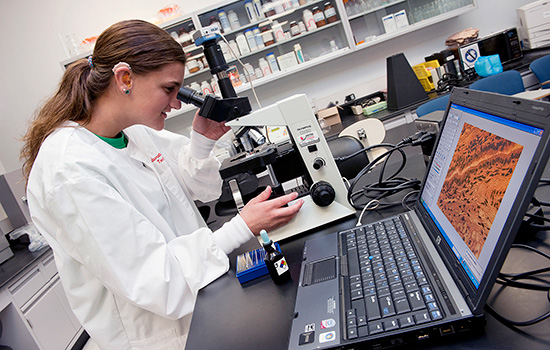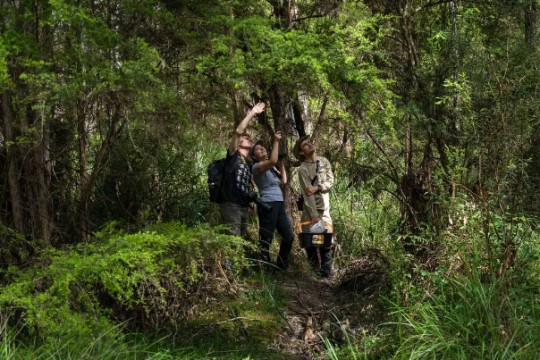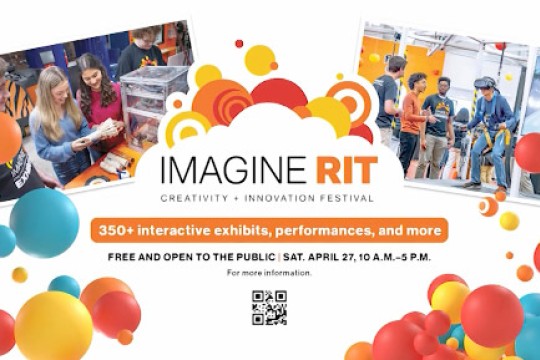NTID, URMC seek training for deaf scientists
RIT/NTID and URMC lead the way in eliminating barriers in biomedical career advancement
Abbey Moreland ’11, ’13 (laboratory science technology, biology) of Crystal, Mich., conducts research.
Leaders at the University of Rochester Medical Center and Rochester Institute of Technology’s National Technical Institute for the Deaf published a rallying cry for the creation of a Diversity Hub of Innovation in Rochester for training deaf scientists. The concept of Diversity Hubs of Innovation was proposed in 2015 by the National Institutes of Health to eliminate barriers in biomedical career advancement for underrepresented groups.
The article, published in Science Letters, highlights the gross underrepresentation of deaf and hard-of-hearing individuals in the biomedical sciences as well as their unique and diverse needs.
Deaf and hard-of-hearing people not only experience language barriers and cultural isolation, but because their modes of communication vary widely, each person’s needs often are unique.
“There's a lot of desire to diversify the biomedical workforce,” said Stephen Dewhurst, vice dean for Research at URMC and author of the article, “but the deaf and hard-of-hearing population has lagged - even compared to some other underrepresented groups. Doing what we do for everybody else is not going to work for these individuals, who experience a lot of infrastructure and environment issues that people just aren't aware of.”
With one of the largest deaf populations in the nation and a top-tier academic medical center five miles from the world’s first and largest technological college for deaf or hard-of-hearing students, Rochester is perfectly positioned to establish a national hub for training deaf scientists. In fact, Dewhurst and Gerard Buckley, president of NTID, vice president and dean of RIT and another author of the Science Letters article, have led an effort to build relationships and develop programs bridging URMC and NTID to foster the success of deaf biomedical trainees.
Buckley and Dewhurst hope that a Diversity Hub of Innovation in Rochester could define and better understand how to meet the needs of deaf and hard-of-hearing scientists and doctors and pass that knowledge on to other institutions. The hub could provide guidance for career development and training, new technologies, state of the art accommodations, expert sign language interpreters (with training in both ASL and biomedical disciplines), and a place for deaf or hard-of-hearing scientists to gather and network.
“A growing number of our students have become professionals in a variety of post-doctoral fields - veterinarians, dentists, physicians,” said Buckley. “Given the resources that URMC and RIT/NTID bring to bear, Rochester is the perfect location to be the Diversity Hub of Innovation for the country, and to become the model for other leading universities. The success of our deaf doctors and scientists will have a positive impact across the country.”















